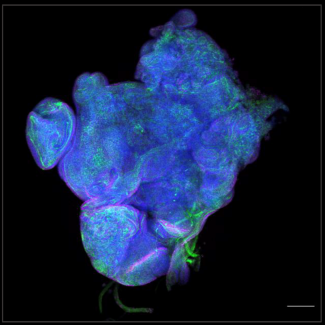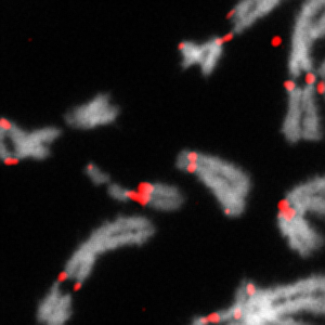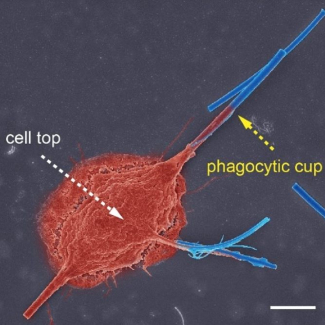
Alzheimer’s Disease: Regulating Copper in the Brain Stops Memory Loss Among Mice
Alzheimer’s disease is characterized by the presence of amyloid plaques1 in the patient’s brain. These plaques sequester copper, and contain approximately five times as much as a healthy brain. Two CNRS scientists from the Coordination Chemistry Laboratory recently developed, with their colleagues from the Guangdong University of Technology and Shenzhen University (China), a molecule that regulates the circulation of copper in the brain. This patented molecule2 extracts the copper trapped in amyloid plaques, and reintroduces it in the brain’s normal enzymatic circuit (which needs copper to function). Administered orally to “Alzheimer” mice,3 this molecule inhibits memory loss among sick mice. These results, which were published in ACS Chemical Neuroscience, open a new therapeutic avenue that could prove effective in early stages of Alzheimer’s disease among humans. The scientists are now seeking a pharmaceutical partner to develop preclinical trials for this drug candidate.
- 1An amyloid plaque is an extracellular aggregate of protein fragments. These plaques are present in various neurodegenerative diseases.
- 2Chinese patent no. 201610369550.X, 27 May 2016. PCT No. PCT/CN2017/085886, published on 30 November 2017. WO 2017/202360 A1. CNRS File no. O/Ref 08792-01. US Patent 10,807,957 B2, 20 October 2020.
- 3The research team obtained positive results for three types of mouse models for Alzheimer’s: transgenic mice on the one hand, and two new models of non-transgenic mice on the other. These non-transgenic models are the closest to the reality of Alzheimer’s disease, which in the vast majority of cases is not genetic in origin.
TDMQ20, a specific copper chelator, reduces memory impairments in AD-mouse models. Jie Zhao, Qihui Shi, Hongda Tian, Youzhi Li, Yan Liu, Zhen Xu, Anne Robert, Qiong Liu and Bernard Meunier. ACS Chem. Neuroscience, December 16 2020. http://dx.doi.org/10.1021/acschemneuro.0c00621

